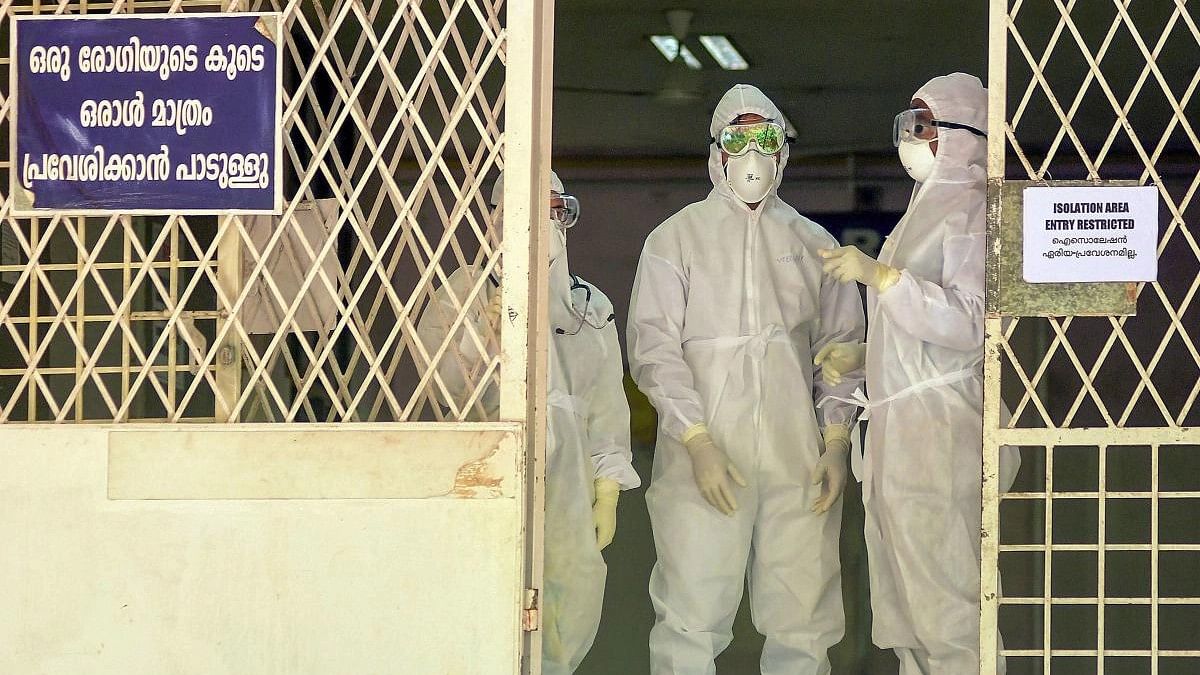
Representative image of health officials.
Credit: PTI Photo
There is high medical alert in Kerala after the death of two persons caused by the Nipah virus in parts of Kozhikode district. There are some others who are under treatment or observation. This is the fourth incidence of the zoonotic disease in Kerala in the last five years. It had caused the death of 17 persons in 2018 and returned in 2019 and 2021 without causing fatalities. Many areas in the district have gone back to observing the defensive protocol against the disease, including wearing masks. Since the first death occurred about two weeks ago and its cause has only now been confirmed, an exercise has been launched to trace all those who had come in contact with the deceased. The contacts of other infected persons are also being traced. While the state authorities have said there is no need for panic, the reappearance of the disease has caused concern.
Though it is confirmed that the source of the Nipah virus in the past was bats, this is yet to be confirmed this time. Animals like pigs can also be carriers of the disease. The death of the first patient did not arouse suspicions but when the second person, who had similar symptoms, died, doctors were alerted to the possibility of Nipah. After the detection of the disease, there was immediate follow-up action. The past experience of handling the disease was useful but there is the need for better and speedier methods of detection. The samples now have to be sent to the National Virology Institute in Pune for final confirmation of the disease. Some proposals and recommendations which were made after earlier outbreaks, like periodic surveys of birds and animals, especially bats, have not been implemented. Delays in confirmation increase the risk for patients and the chances of spread of infection.
The chances of spread of new zoonotic viral diseases which are transmitted from wildlife to mammals and humans have increased in recent years. They are likely to see an upswing in the coming years due to increasing deforestation, greater interaction between animals and humans, increase in population, and climate change. Many animals and birds leave their habitats for human habitations for food and water, carrying the virus with them. A recent ICMR survey had found that nine states in the country, including Kerala, Karnataka and Tamil Nadu, are very vulnerable to zoonotic diseases. The State of the World’s Forests 2022 report had also said that India and China could emerge as hotspots of zoonotic diseases. In the case of Nipah, other states, especially Kerala’s neighbours Karnataka and Tamil Nadu, must be on guard and public health officials on alert for signs of its spread.